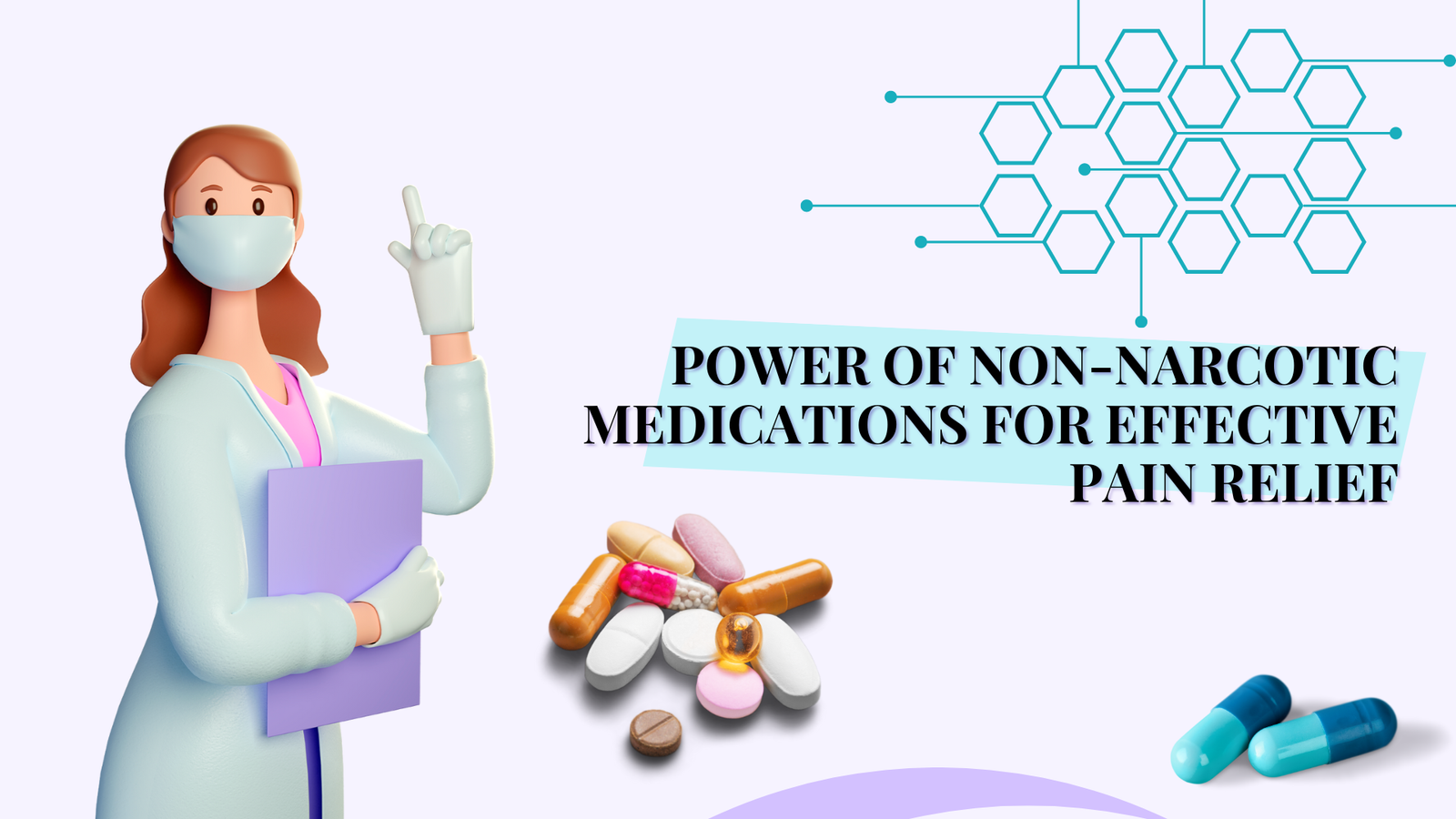Chronic or severe pain may be terrible for a lot of individuals. Physical discomfort caused by any type of pain can have a major impact on an individual’s social and personal life. Physical discomfort, particularly chronic pain, is closely linked to depression; therefore pain management with medication becomes necessary. In reality, opioid medications such as morphine, methadone, fentanyl, oxycodone, buprenorphine, tapentadol, hydromorphone, and oxymorphone are widely used to treat pain. Opioids prescribed by a doctor, on the other hand, are used to treat extremely specific types of pain, such as cancer-related pain and acute post-surgical pain. Unfortunately, the excessive use of opioids results in side effects, addiction, and even death.
To avoid all of these risks, individuals may choose non-narcotic medication for pain that are effective and have a greater safety feature compared to opioids that are available over the counter. A combination of non-opioid medicine and pain-relieving therapies (physical therapy, exercise, injections, and so on) is often helpful to manage pain efficiently.
In this blog post, we will quickly discuss the benefits and effectiveness of non-narcotic medication in treating pain.
Non-Narcotic Pain Medications
Non-narcotic medications for pain are analgesic, antipyretic, and anti-inflammatory. Non-narcotic pain medication decreases pain by lowering prostaglandin synthesis or by inhibiting nerve impulses that send pain signals from the wounded place to the brain. Non-narcotic pain medications are the safe, and effective first-line therapy choice for chronic pain.
Many non-opioid pain medications, such as ibuprofen (Motrin), acetaminophen (Tylenol), aspirin (Bayer), and steroids, are available over the counter or by prescription, and many individuals find them to be beneficial for relieving pain.
Benefits of Non-Narcotic Medications for Pain Management
- Reduced risk of dependency and addiction.
- Fewer side effects than opioids.
- Capability to cure various kinds of pain.
- The ability to collaborate with other forms of therapy or treatments.
A few Effective Non-Opioid Pain Medications
There are several non-narcotic medications for pain available over-the-counter or by prescription. The most popular non-opioid medicines are as follows –
- Over-the-counter options
- Acetaminophen– This is the active component of Tylenol, a popular over-the-counter painkiller. Acetaminophen is usually recommended to treat osteoarthritis and back pain. Acetaminophen does not cause stomach or heart issues like NSAIDs, but taking more than the recommended dosage might cause liver damage
- Ibuprofen – Ibuprofen is a pain killer that is readily accessible without a prescription and is known as a no steroidal anti-inflammatory drug (NSAID). It is mainly used to treat fevers as well as minor aches and pains caused by headaches, muscle aches, arthritis, menstrual cycles, the common cold, toothaches, and backaches. Ibuprofen can be used safely with paracetamol or codeine. However, do not take ibuprofen with other pain medicines such as aspirin or naproxen without consulting with a pharmacist or doctor. Ibuprofen can irritate your stomach lining, resulting in discomfort ranging from mild nausea to ulcers.
- Prescribe Medications :
- Tricyclic Antidepressants –Patients with nerve pain (such as back pain, fibromyalgia, and diabetes-related nerve pain) can benefit from tricyclic antidepressants (such as imipramine, nortriptyline, and amitriptyline). Antidepressants may assist with pain and mood disorders since chronic pain can result in a range of disorders that may lead to depression. Sleep can also be improved using antidepressants.
- Anticonvulsants – Anticonvulsants are commonly employed as first-line treatment for neuropathic pain and epilepsy. Anticonvulsants may also help to alleviate neuropathic pain by suppressing pain signals in the brain. Nausea, stomach discomfort, dizziness, tiredness, irritability, anxiety, or mood disturbances are some of the side effects of anticonvulsants. These are typically not dangerous, but they might cause concern in certain people and should be discussed with a physician or chemist.
- Topical NSAIDs – Topical NSAIDs are commonly used to treat osteoarthritis and musculoskeletal discomfort (such as a broken ankle or torn muscle). They are useful in the treatment of mild strains, sprains, and contusions. Topical NSAIDs penetrates the skin and enter tissues or joints, inhibiting the processes that produce tissue pain. They are applied to unbroken skin as gels, creams, sprays, or plasters. Since topical NSAIDs are applied directly to the site of pain rather than taken orally, thereby reducing the risk of side effects.
- Serotonin-nor epinephrine reuptake inhibitors (SNRIs) – Serotonin and Norepinephrine Reuptake Inhibitors (SNRI) are antidepressants that can be used to relieve nerve, muscle, and skeletal pain. They are commonly recommended for the treatment of fibromyalgia, diabetic peripheral neuropathy, and chronic musculoskeletal pain.
Factors to Consider When Choosing Non-Narcotic Medications
- The area of the discomfort.
- How long you have experienced it?
- The nature of the pain.
- Check the possibilities of drug side effects and allergic reactions.
Managing pain with Non -Narcotic Medications
No two cases of chronic pain are similar. Since each patient is unique, the technique that works for one might not be effective for another. As a consequence, discussing with a physician to identify the appropriate pain management approach is essential.
Your healthcare practitioner may go over the following questionnaire with you before prescribing an effective non-narcotic medication for pain to help you live a pain-free life.
- Your objectives- Yourhealthcare practitioner will assist you in setting realistic pain-reduction goals.
- The Advantages Vs the Risks – Every 1 to 4 weeks, your healthcare expert will assess if the advantages of a non-narcotic painkiller exceed the risks associated with it. If you continue to use that medication, you will be examined at least every three months.
Conclusion
If you are in physical pain, there are several choices available to assist you in reducing the severity of the pain while also restoring your mental and physical health so that you can keep an active lifestyle. Sometimes a prescription painkiller is required, but many times pain may be managed with safer alternatives. If you choose not to use medicines, you might try physical therapy or acupuncture to help you manage your pain. Whatever your preference, never hesitate to speak with your doctor before trying to experiment with new pain-relieving methods. Because




